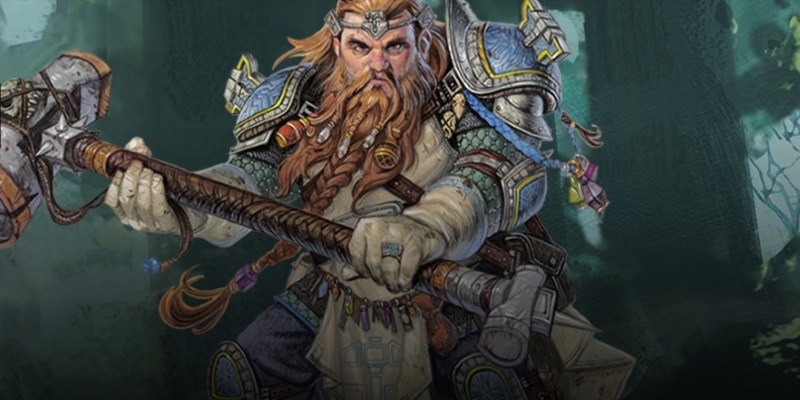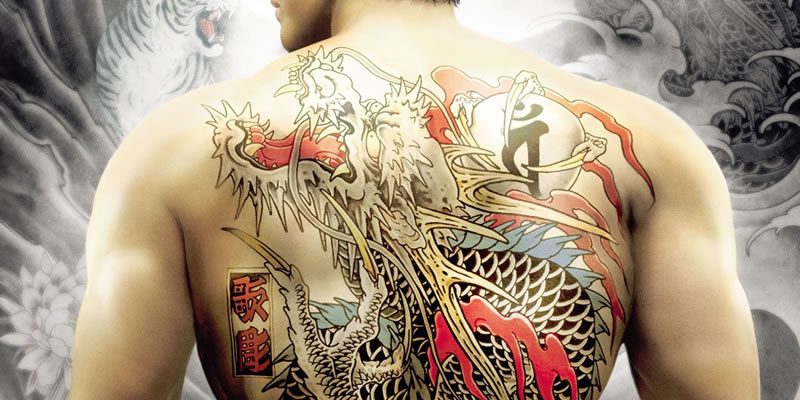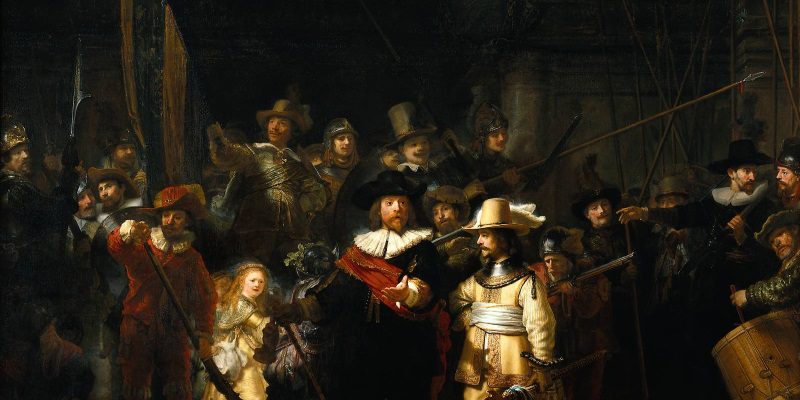Unearthed Arcana: Divine Domains Breakdown

One of these days, I’ll start managing two-article weeks again, and my columns will return to their normal schedule. This is the week of America’s favorite secular food holiday, and I’ll be mostly or entirely offline Wednesday evening through Saturday morning, so this week is not the one. Today, though, Rogers and Hammerstein have Unearthed new Arcana for us: three new domains for clerics. Where barbarians and bards were two of the classes narrowest in options, the cleric stands tied with the wizard for the most in the initial release (if you count Death from the DMG), and they stay even in the Sword Coast Adventurer’s Guide as they each tack on one more. Let’s see what the Forge, Grave, and Protection domains offer.
Forge Domain
The forge and crafts have been calling out for a domain for thematically connected gods all along. Gods like Moradin are a poor fit for the Knowledge domain that the Player’s Handbook assigns them – Knowledge is unmistakably squishy and caster-y. This should also appeal to angry fire gods of all kinds – Kossuth and Surtur come to mind. How does the Forge domain stack up?
- Its domain spells are a mix of attack buffs (searing smite, magic weapon, elemental weapon), defensive buffs (shield, protection from energy), and other thematically relevant spells. Overall this pushes an aggressive melee spellcasting style. Good so far.
- Heavy armor proficiency at first level. Yep, on point with the melee-brute style.
- Blessing of the Forge lets you keep one weapon or suit of armor functionally enchanted as a +1 item. This makes sense; might become irrelevant in late-game play, or it might just inform your approach to your precious attunement slots. Kinda depends on the treasure that shows up.
- Channel Divinity: Artisan’s Blessing lets you craft items quickly as long you pay their fair market value in materials. If you have a spare hour, materials, and a problem that conventional gear can solve, then this is a pretty good feature. This situation isn’t that common, but it’s common enough to be have some applications. Two things, though:
- This still isn’t a compelling or useful crafting system, since it makes sure you can’t turn a profit in a standard market. You wouldn’t want “turn a profit in one hour!” as a subclass feature, but still – D&D’s lack of a worthwhile crafting system has bugged me for more than two years now. Functionally, all this does is collapse your crafting time down to an hour. From another perspective, it lets you buy gear from your god at market cost.
- It’s super weird to me that you spend a Channel Divinity and a short rest, and then refresh your CD at the end of said short rest. This is always available as long as you haven’t spent all of your CD uses beforehand – unless the timing on expenditure and refresh is much more specific than the text really calls out.
- Soul of the Forge is a collection of useful passive bennies: +1 AC while wearing the type of armor you should be wearing while adventuring, resistance to fire damage, and a hefty damage bonus against constructs. Fortunately, Soul of the Forge is still great even if you never face a construct in your entire career.
- Divine Strike, now in fire flavor! (Cinnamon.) Anyway, more clear melee-cleric support.
- I hate that each domain either gets Divine Strike or their ability score bonus to cantrip damage – at worst, every cleric should get to choose either one at the time they gain the feature. At best, you’d edit spells like greenflame blade and booming blade to clarify that you only get one or the other in a single casting, then go ahead and give every cleric both at 8th Switching between melee and spellcasting freely feels good, if it’s an option.
- Saint of Forge and Fire is the War domain’s Avatar of Battle, but better, because it also upgrades your fire resistance to fire immunity. I hate this feature on principle, because it looks like straight-up power creep, and because I think player-accessible immunities are bad design that can’t help but ruin encounters. Sure, the resistance to B/P/S damage only works while you’re wearing heavy armor… that the whole subclass is dedicated to convincing you never to remove.
Overall, the Forge domain is my favorite of the three, and I have plenty of criticism to offer it. Like I said above, it’s an important concept to support, and this isn’t bad overall. (Except for the fire immunity – that one is always a bad idea.) I would be much happier to see something like the Channel Divinity option change to “reduce all fire damage until the beginning of your next turn to 0,” and the rest of Saint of Forge and Fire turned into something that isn’t just a lift of Avatar of Battle.
Grave Domain
The Grave domain is another theme that needed support, because the Death domain has the wrong tone for clerics of Kelemvor and other good or neutral gods of death. This has become a popular archetype, and it’s great to see something for those players.
- The domain spells are fairly thematically appropriate, unless you’re dealing with the kind of death god that never gives up the dead (not common in D&D, but I’ve seen it a time or two). They aren’t as clear of a playstyle as the Forge domain spells, but they get their point across.
- Heavy armor proficiency. All three of these domains are melee-directed and grant heavy armor proficiency. So, sure.
- Circle of Mortality maximizes healing spells you cast on targets that are at 0 hit points, and lets you cast spare the dying as a bonus action.
- I don’t like the Life domain’s Supreme Healing feature because negates a die roll, but this narrows the maximizing effect to a single situation, so I think it’s fine.
- I’m glad that they’re doing something to make spare the dying better than just having a healer’s kit.
- Eyes of the Grave is more or less the ranger’s Primeval Awareness feature, but only detects undead. It also gives you the number of undead and the creature type of the highest-CR undead in the area.
- I think this is just a terrible idea, in terms of the DM giving players honest answers at the table. I’m aware that FR’s Undermountain mega-dungeon traditionally shuts down a ton of different effects (2e design at its Second-est), but imagine the player using this feature in any standard dungeon. This collapses the dungeon-stocking waveform: now the DM gets to count the undead and figure out whether the lich or the vampire or whatever else has the highest CR. One hopes your players would have better manners than this… but don’t design rules that it would be impolite for the players to use in a straightforward way. (It’s okay if there are corner-case applications that are rude, but this isn’t corner-case.)
- Channel Divinity: Path to the Grave sets a creature up to be vulnerable to the next source of damage it receives, or it wipes out resistance or immunity for the next attack.
- Optimal use of the vulnerability option takes a lot of discussion with the rest of your party, and someone who deals a ton of damage in a single attack or spell, such as a rogue or sorcerer.
- Ignoring damage immunity means that a Grave cleric can make a fire elemental get burned, which is… interesting. Strange, but sure, whatever.
- Sentinel at Death’s Door lets you convert a crit that you or a nearby ally would suffer into a normal hit, once per short or long rest. This would mean more if more monsters triggered additional badness on critical hits, but as it is, it’s useful but not appreciably thematic. It seems to me like it would fit the Protection domain a lot better.
- Divine Strike, necrotic-flavored. (Ewww.)
- Keeper of Souls lets you heal yourself or a nearby ally whenever an enemy near you dies. Once per round. For an amount equal to the slain enemy’s number of Hit Dice.
- I think this is the first effect that hangs on an NPC’s number of Hit Dice. Consider that when you’re creating an NPC, you literally just keep adding more Hit Dice until the creature has the number of hit points that are appropriate to their CR – there’s not even an implication of objective, in-world meaning to an NPC’s HD. This feels really weird to me. Also, I can’t imagine how it’s not insanely overpowered. It doesn’t even cost your reaction.
Overall, the Grave domain doesn’t feel convincingly death-priest-y to me, until you pick up Keeper of Souls at 17th level. The domain’s playstyle is a Life cleric who would rather let you fall than heal you first. I would like to see a lot more thematic clarity in this domain’s features, if and when there’s a revision posted or published. The mechanics are laser-focused on combat applications here, and I’d like to see some of the other pillars of gameplay touched on. (Eyes of the Grave doesn’t get the job done, for reasons I’ve explained.)
Protection Domain
This domain is the place to be if you love the paladin concept, but really wish it got 9th-level spells rather than stopping at 5th. I don’t know how else to explain it. There are a lot of possible points on the spectrum between cleric and paladin, and this is one expression of the midpoint.
- Their domain spells are, of course, protective. There’s a whole lot of City of Heroes’ bubble defender going on here – a million ways to mitigate, stop, or punish attacks.
- Heavy armor proficiency, again. Admittedly, it would be weird not to have it here or in the Forge domain.
- Shield of the Faithful is the Protection fighting style, without the requirement that you wield a shield.
- Colin and I have both written in our own blogs about everything wrong with the Protection fighting style, and the difference here doesn’t solve anything (because requiring a shield wasn’t the problem). I dearly hope this gets changed.
- Channel Divinity: Radiant Defense spends your action and one of your Channel Divinity uses to put a radiant-damage-flavored hellish rebuke (plus your cleric level!) on an ally. This is a pretty badass feature, though costing your action seems steep. It’s flat-out amazing if you can use it as a pre-battle buff within its one-minute duration window.
- Blessed Healer is a Life domain feature, used here because it promotes supporting others to support yourself – it pays you for playing the way Protection should, basically.
- Divine Strike, radiant flavored. (Tastes like sunlight. And pineapple.)
- Indomitable Defense grants resistance to two damage types out of a list of five (B/P/S plus radiant and necrotic), and you can give away that resistance to an ally for a time. This is a good feature all in all.
The Protection domain, then, does what it says on the tin mechanically. Here at least, it seems entirely appropriate to go extra-heavy on combat-oriented features. I feel like they stayed a lot more conservative on feature design in this domain, and the rest of the document, than in the rest of this month’s UA articles so far. Keeper of Souls is crazy, sure. But nothing else is as flashy as some of the crazy things that the new barbarian and bard subclasses are doing. I’m glad that they’re supporting these portfolio concepts, but I’m underwhelmed with this implementation. (Of course, the best and worst implementations make me equally grateful for Unearthed Arcana’s existence as a column.)



